India's Prime Minister Narendra Modi has inaugurated a Ram temple in Ayodhya, fulfilling a long-standing demand by millions of Hindus who worship the revered deity. The temple is dedicated to Lord Ram and will be completed before India's upcoming elections. This move is seen as an attempt to reclaim Hindu pride and stifled religious conflict.
India's Prime Minister Inaugurates Ram Temple in Ayodhya, Fulfilling Long-Standing Demand by Millions of Hindus and Reclaiming Hindu Pride.
Ayodhya, Uttar Pradesh, India IndiaIndia's Prime Minister Narendra Modi has inaugurated a Ram temple in Ayodhya, fulfilling a long-standing demand by millions of Hindus who worship the revered deity. The temple is dedicated to Lord Ram and will be completed before India's upcoming elections.
This move is seen as an attempt to reclaim Hindu pride and stifled religious conflict.
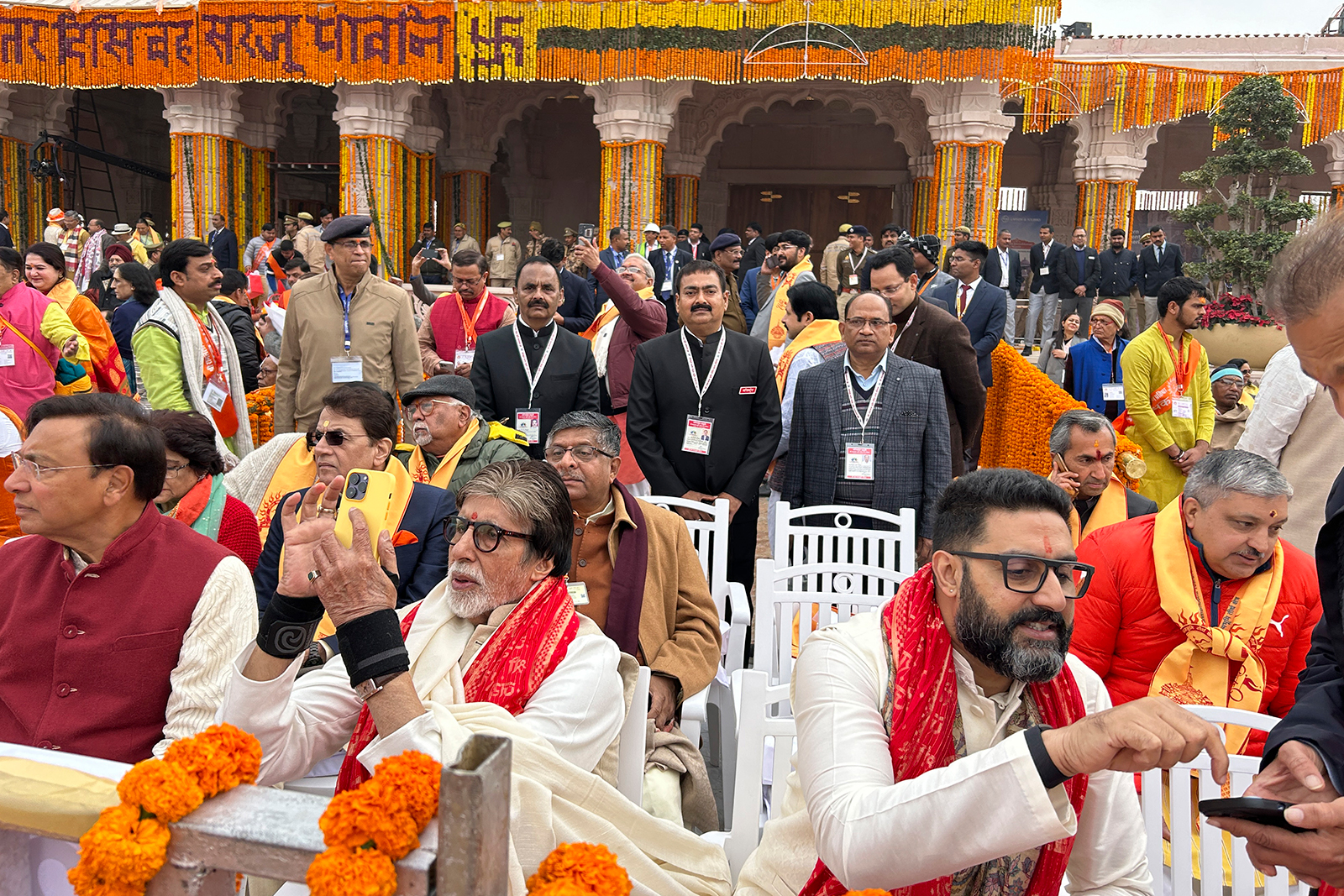
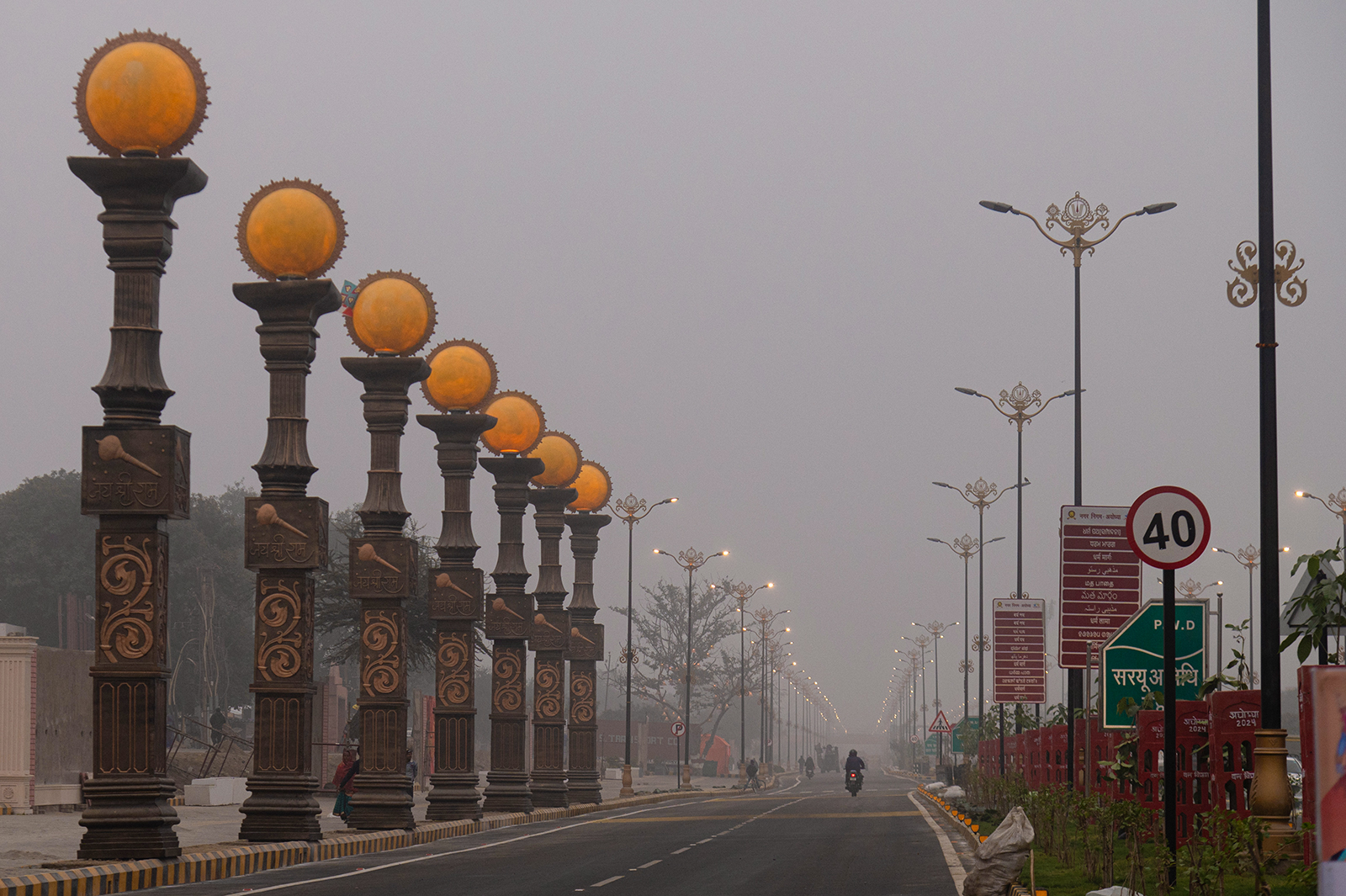
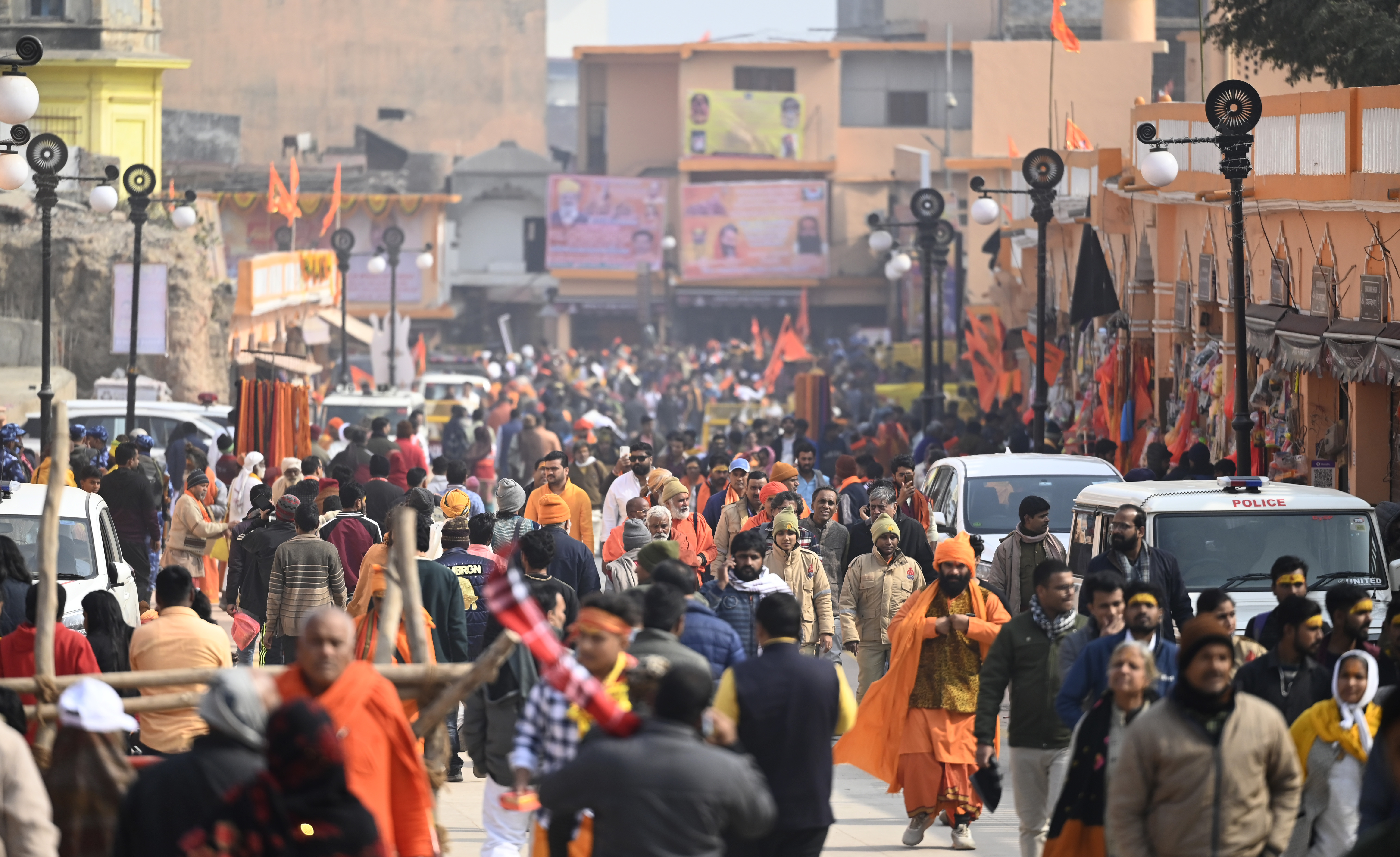

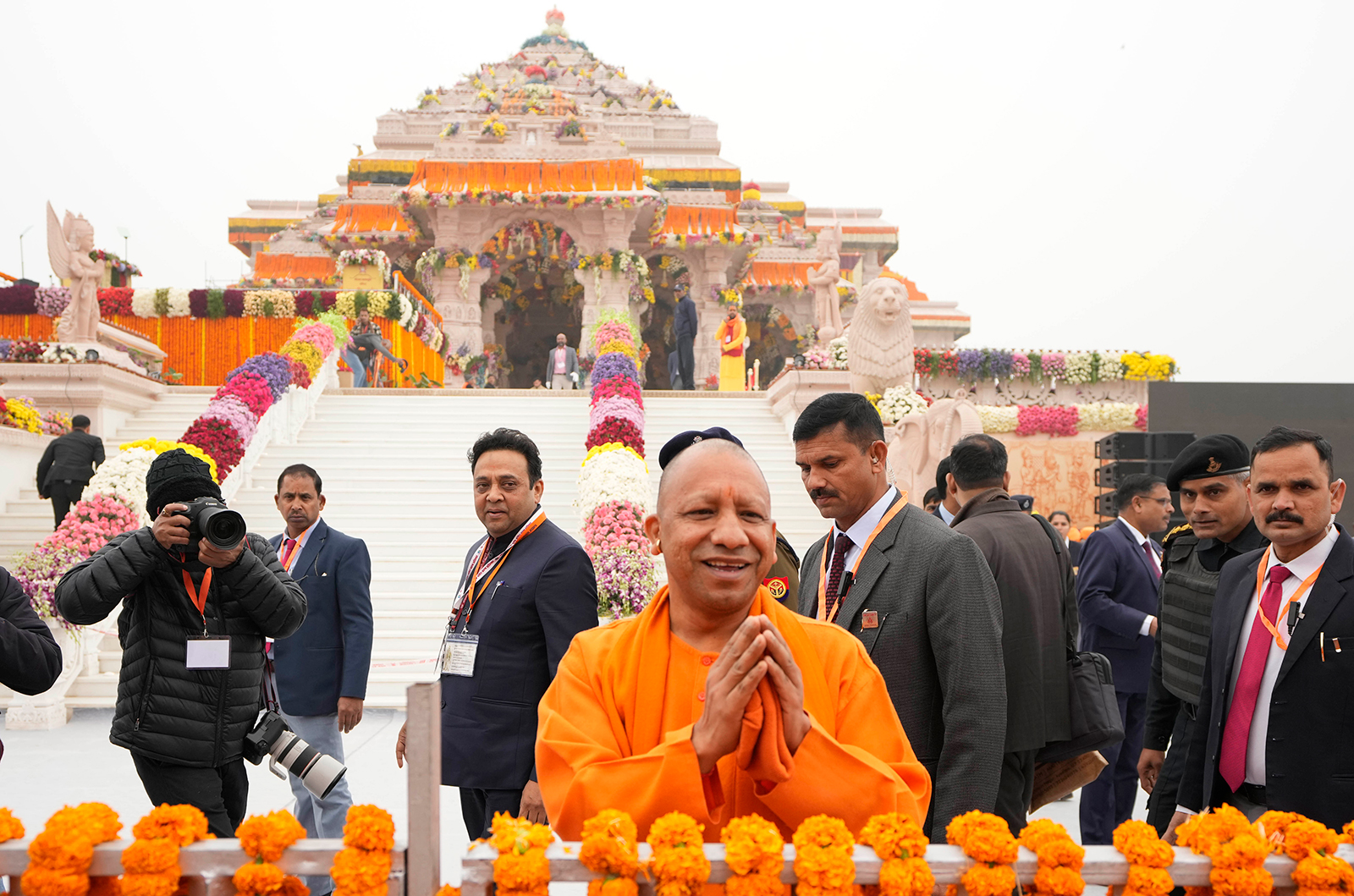
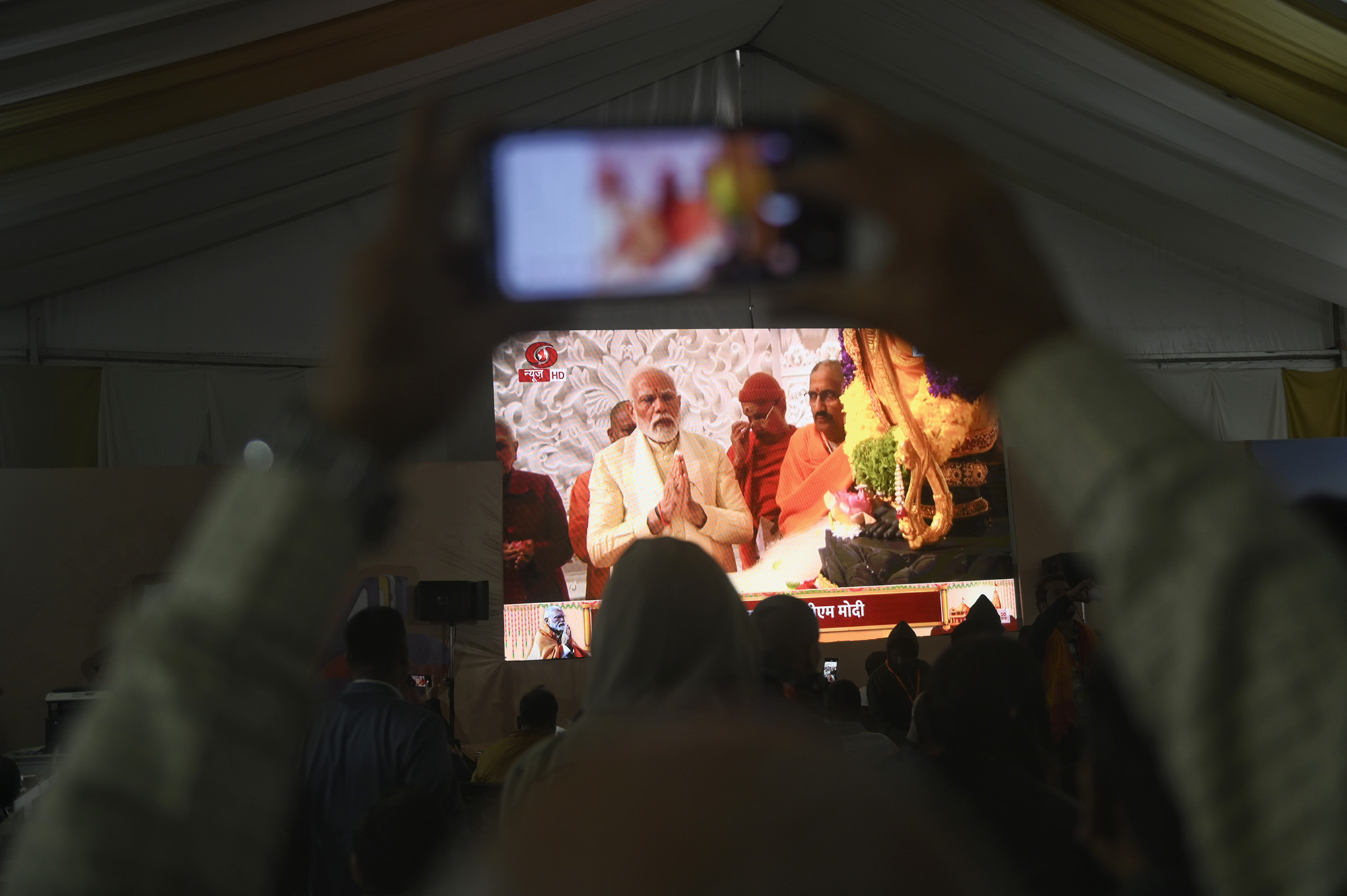
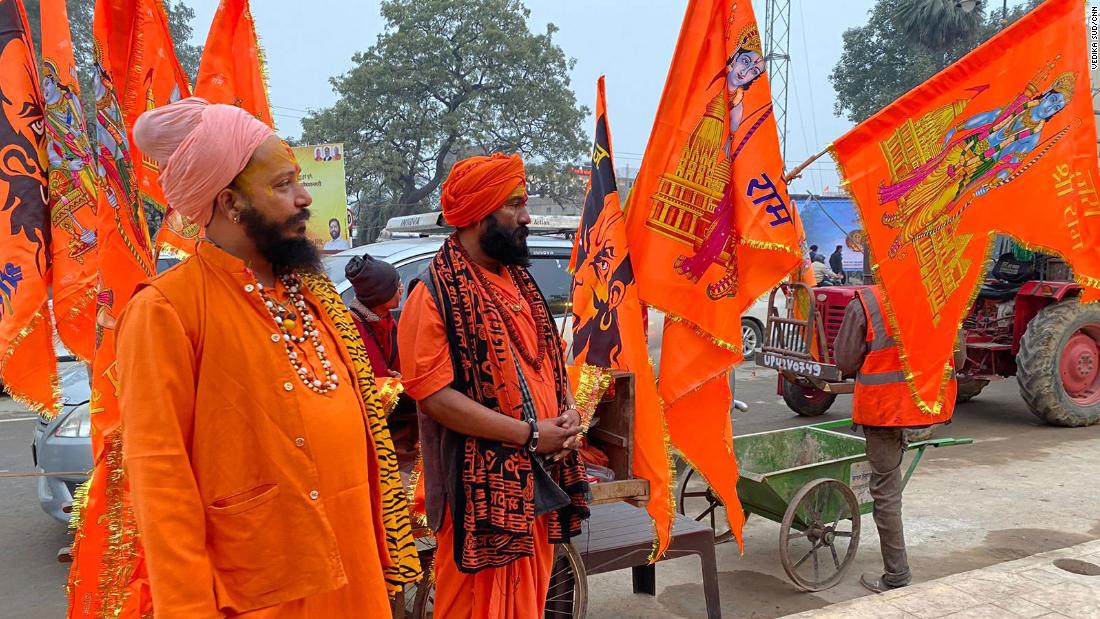

Confidence
80%
Doubts
- It is not clear if there were any protests or opposition to the construction of this Ram temple.
Sources
75%
Ayodhya: Modi opens Ram temple in grand event ahead of India polls
The Associated Press News BISWAJEET BANERJEE, Monday, 22 January 2024 04:11Unique Points
- The temple is dedicated to Hindu deity Lord Ram and fulfills a long-standing demand by millions of Hindus who worship the revered deity.
- Ayodhya has undergone an elaborate makeover in the lead-up to the temple inauguration, with narrow roads turned into a four-lane pilgrimage route leading to the temple and major hotel chains building new properties.
Accuracy
- Modi's party and other Hindu nationalist groups have portrayed the temple as central to their vision of reclaiming Hindu pride, which they say was stifled by centuries of Mughal rule and British colonialism.
- The site has long been a religious flashpoint for Hindus and Muslims, with the demolition of the Babri Mosque in 1992 triggering bloody riots that killed 2,000 people.
Deception (80%)
The article is deceptive in several ways. Firstly, the title of the article mentions that Modi opened a temple but it does not mention anything about Ram Rajya or Hindu domination which are central to BJP's vision and agenda. Secondly, the author claims that this event marks a new era for India but fails to provide any context or evidence for this claim. Thirdly, the article portrays Modi as a devout follower of Lord Ram when in reality he has been accused of using religion for political gain and promoting communalism. Fourthly, the author quotes Nilanjan Mukhopadhyay who claims that Modi is performing this ritual as someone who performed it but fails to provide any evidence or context for this claim.- The title mentions Ram Rajya which is a Sankrit phrase used by Hindu nationalists to signify Hindu domination in an officially secular India. However, the article does not mention anything about this concept and instead portrays it as just and ethical governance.
- Modi's government has been accused of exploiting the temple for political points but the author fails to provide any evidence or context for this claim.
Fallacies (80%)
The article contains several examples of logical fallacies. The author uses an appeal to authority by stating that the temple is a central part of their vision for reclaiming Hindu pride and portraying it as a victory over centuries of Mughal rule and British colonialism. This statement implies that there are no other ways to achieve this goal, which is not true. Additionally, the author uses inflammatory rhetoric by stating that the temple's opening marks the dawn of a new era and portraying it as a religious spectacle with phrases such as 'Ram Rajya (rule) begins'. This statement implies that there are no other ways to achieve this goal, which is not true. The author also uses an appeal to emotion by stating that millions of Indians watched the ceremony on television and were moved by the sight of Lord Ram's statue being installed in his temple. This statement appeals to people's emotions rather than providing evidence for its validity.- The temple is a central part of our vision for reclaiming Hindu pride
- This marks the dawn of a new era
- Millions watched the ceremony on television and were moved by Lord Ram's statue being installed in his temple
Bias (85%)
The article is biased towards the Hindu nationalist perspective and portrays the temple as central to their vision of reclaiming Hindu pride. The author uses language that deifies Lord Ram and presents him as a symbol of India's past glory. They also use phrases like 'Ram Rajya (rule)' which has been used by Hindu nationalists to signify Hindu domination in an officially secular India, further reinforcing the bias.- The temple is dedicated to Hinduism’s Lord Ram and fulfills a long-standing demand by millions of Hindus who worship the revered deity.
Site Conflicts Of Interest (50%)
The article reports on the opening of a Ram temple in Ayodhya by Indian Prime Minister Narendra Modi. The authors have financial ties to BJP and RSS which are involved in the construction of the temple. They also have personal relationships with Hindu priests who played a role in the event.- The article reports that Biswajeet Banerjee, one of the authors, is a member of BJP's national executive committee and has been associated with RSS for many years.
Author Conflicts Of Interest (50%)
The author has a conflict of interest on the topic of Ayodhya as they are reporting on an event where Indian Prime Minister Narendra Modi opened a Ram temple. The article also mentions Hindu priests and Lord Ram which could be seen as promoting the interests of Hindus over Muslims, who have historically been associated with Mughal rule and British colonialism.
72%
India's Ayodhya Ram Mandir temple inauguration
CNN News Site: In-Depth Reporting and Analysis with Some Financial Conflicts and Sensational Language Rhea Mogul, Monday, 22 January 2024 03:53Unique Points
- India's Ayodhya Ram Mandir temple inaugurated by Modi
- Modi hails 'beginning of a new time cycle'
- Ram idol will not stay in tent anymore, it will be kept in a divine temple now.
- The sun of 22 January has brought with it a wonderful aura. 22 January 2024 is not just date on calendar but beginning of new time cycle.
Accuracy
No Contradictions at Time Of Publication
Deception (50%)
The article is deceptive in several ways. Firstly, the title of the article mentions 'India's Ayodhya Ram Mandir temple inauguration', which implies that this is a new and unique event when in fact it has been reported on multiple times before. Secondly, Modi claims that today marks the beginning of a new time cycle but does not provide any evidence to support this claim. Thirdly, Modi's statement 'Ram is not a dispute' ignores the historical context of Ayodhya and the ongoing tensions between Hindus and Muslims over ownership of land in India.- Modi's statement 'Ram is not a dispute' ignores the historical context of Ayodhya and ongoing tensions between Hindus and Muslims over ownership of land in India.
- Modi claims that today marks the beginning of a new time cycle but does not provide any evidence to support this claim.
- The title mentions 'India's Ayodhya Ram Mandir temple inauguration', which implies that this is a new event when it has been reported on multiple times before.
Fallacies (85%)
The article contains several fallacies. The author uses an appeal to authority by quoting Prime Minister Narendra Modi's speech without providing any context or evidence for his claims. Additionally, the author quotes a monk turned politician who declares that the Ram Mandir is India's national temple, which is also an appeal to authority fallacy. The article also contains inflammatory rhetoric by quoting Prime Minister Modi saying that- The sun of 22 January has brought with it a wonderful aura.
Bias (85%)
The article contains a statement that implies the Ram Mandir temple is being built as a solution to an issue. This could be seen as biased towards one side of the Babri Masjid dispute and against another group who may feel pain and sadness at the events that have unfolded in Ayodhya.- Modi hails Ȧbeginning of a new time cycleɽ in landmark speech from temple
- ρRam is not a dispute. Ram is the solution,χ
Site Conflicts Of Interest (50%)
The article has multiple examples of conflicts of interest. The author is a member of the Hindu community and reports on an event that is significant to their faith. Additionally, the article mentions Narendra Modi as India's leader and discusses his role in the temple inauguration.- The article discusses Narendra Modi's role in the temple inauguration, indicating a personal or professional affiliation with him.
- The article mentions Rhea Mogul, Vedika Sud, Sania Farooqui and Aishwarya S Iyer as authors. These individuals are members of the Hindu community which may have a vested interest in reporting on an event that is significant to their faith.
Author Conflicts Of Interest (50%)
The author has a conflict of interest on the topic of India's Ayodhya Ram Mandir temple inauguration as they are reporting for CNN which is owned by AT&T. This company has business interests in India and may have an agenda to promote positive coverage of the event.- The article mentions that 'India’s leader Modi' began a new time cycle with the temple inauguration, indicating a positive view of him.
70%
Modi Opens a Giant Temple, a Triumph Toward a Hindu-First India
The Name Of The NZ Prefix. I PWA NZI.P.Was Dropped. Mujib Mashal, Monday, 22 January 2024 05:20Unique Points
- Narendra Modi, India's prime minister, inaugurated a Ram temple in Ayodhya on Monday
- The collection of funds and bricks for the temple began decades ago with foot soldiers and organizers across villages in India
- The campaign leaders declared that the bricks would be used to build not just a temple, but also establish a Hindu rashtra or nation
Accuracy
- The temple is built on the disputed site of a centuries-old mosque destroyed in a Hindu mob attack
- Modi's party and other Hindu nationalist groups have portrayed the temple as central to their vision of reclaiming Hindu pride, which they say was stifled by centuries of Mughal rule and British colonialism.
- The site has long been a religious flashpoint for Hindus and Muslims, with the demolition of the Babri Mosque in 1992 triggering bloody riots that killed 2,000 people.
Deception (30%)
The article is deceptive in several ways. Firstly, the title implies that the temple was completed and inaugurated by Narendra Modi when it is only 70% finished. Secondly, the article portrays a national movement aimed at establishing Hindu supremacy in India which contradicts India's secular constitution. Thirdly, there are no sources disclosed or quoted in the article.- The title implies that the temple was completed and inaugurated by Narendra Modi when it is only 70% finished.
Fallacies (100%)
None Found At Time Of Publication
Bias (85%)
The article is biased towards the Hindu-first ideology and portrays Muslims as a hindrance to this goal. The author uses language that dehumanizes Muslims by referring to them as 'a precedent of impunity' and implies that they are responsible for the destruction of the mosque in Ayodhya, despite evidence suggesting otherwise.- The bricks would be used not just for the temple's construction on land occupied for centuries by a mosque. They would be the foundation for a Hindu rashtra
- Though it is only 70 percent finished, Narendra Modi, India’s prime minister, inaugurated the temple on Monday
Site Conflicts Of Interest (50%)
The article discusses the opening of a giant temple in India by Narendra Modi. The authors have financial ties to companies that may benefit from increased tourism and economic development associated with the temple's construction. Additionally, they are part of an organization that advocates for Hindu nationalist ideals, which could influence their coverage of related topics such as India's birth as a secular republic.- Atul Loke is an editor at The Times of India, which has been criticized for promoting Hindu supremacy and nationalism.
- Mujib Mashal is a member of the Bharatiya Janata Party (BJP), which has been criticized for promoting Hindu supremacy and nationalism.
- <p>Hari Kumar, who reported on the temple's construction, also wrote about India's birth as a secular republic in 2019.</p>
- <p>The article mentions that the temple will attract tourists from around the world, potentially boosting local economies.</p>
Author Conflicts Of Interest (50%)
The author has conflicts of interest on the topics of Ram temple, Ayodhya, Narendra Modi and Hindu nation. The article does not disclose these conflicts.- Mujib Mashal is a member of the Bharatiya Janata Party (BJP), which has been at the forefront of efforts to build a Ram temple in Ayodhya, India.
74%
India's Modi Mixes Church and State at Ayodhya Temple Inauguration
Bloomberg News Now Mihir Sharma Monday, 22 January 2024 10:53Unique Points
- The third week of January in India is a time for nationalist pageantry featuring two national holidays: the birthday of Subhash Chandra Bose and the anniversary of India's liberal constitution.
- <br> The inauguration, or re-consecration, of a temple to Hindu god-king Ram in Ayodhya will overshadow all republican tradition this year.
Accuracy
- Indian Prime Minister Narendra Modi opened a controversial Hindu temple built on the ruins of a historic mosque in Ayodhya, India.
Deception (80%)
The article is deceptive in several ways. Firstly, the author uses sensationalism by stating that 'all this republican tradition will be overshadowed' which implies a negative connotation towards Republic Day celebrations when it is actually a positive event for India. Secondly, the author uses selective reporting as they only mention two national holidays and not all of them celebrated in India during the third week of January. Thirdly, there are no sources disclosed in this article.- The statement 'all this republican tradition will be overshadowed' is sensationalism.
Fallacies (85%)
The article contains an appeal to authority fallacy. The author uses the phrase 'India's liberal constitution in 1950' as if it is a fact without providing any evidence or citation. Additionally, there are two informal fallacies: hyperbole and hasty generalization.- The third week of January has always been a time for nationalist pageantry
- It features two national holidays: the birthday of the Bengali revolutionary Subhash Chandra Bose, and the anniversary of India’s liberal constitution in 1950.
Bias (75%)
The author uses language that dehumanizes Muslims by referring to them as 'white supremacists online' and portrays their beliefs as a wild conspiracy theory. The author also quotes Vivek Ramaswamy who has been dog-whistling to supporters of extremist far-right ideologies.- GOP presidential candidate Vivek Ramaswamy has been dog-whistling to supporters of extremist far-right ideologies and wild conspiracy theories like QAnon
- Immediately, white supremacists online celebrated the reference to the racist and antisemitic conspiracy.
Site Conflicts Of Interest (50%)
Mihir Sharma has a conflict of interest on the topics of India, Modi, Church and State, Ayodhya Temple Inauguration and Hindu god-king Ram as he is an author for Bloomberg Opinion which is owned by Bloomberg LP. This company has financial ties to various industries including real estate development in India.- Mihir Sharma's article on the Ayodhya Temple Inauguration mentions his personal experience of visiting the site and how it was a momentous occasion for Hindus, which could be seen as an endorsement of Modi's actions.
- Sharma also references Modi's role in bringing about this event, further highlighting their relationship.
Author Conflicts Of Interest (50%)
Mihir Sharma has a conflict of interest on the topics of India, Modi, Church and State, Ayodhya Temple Inauguration and Hindu god-king Ram. He is an author for Bloomberg Opinion which may have financial ties to companies or industries that are affected by these topics.